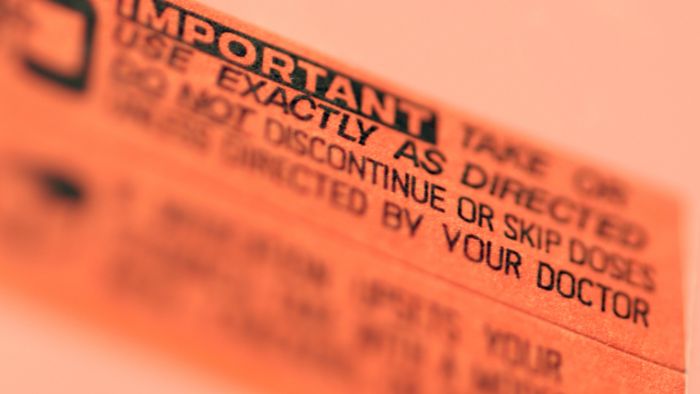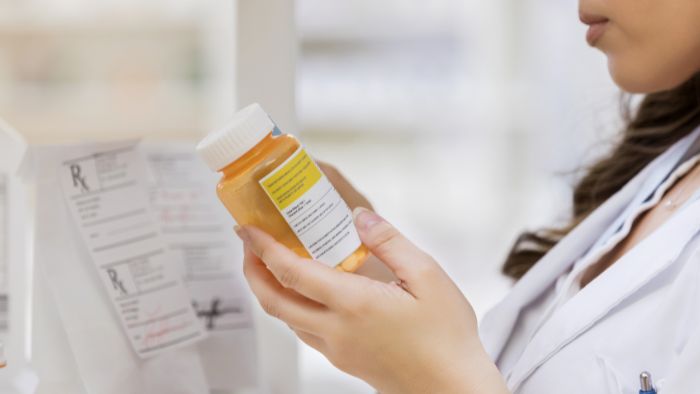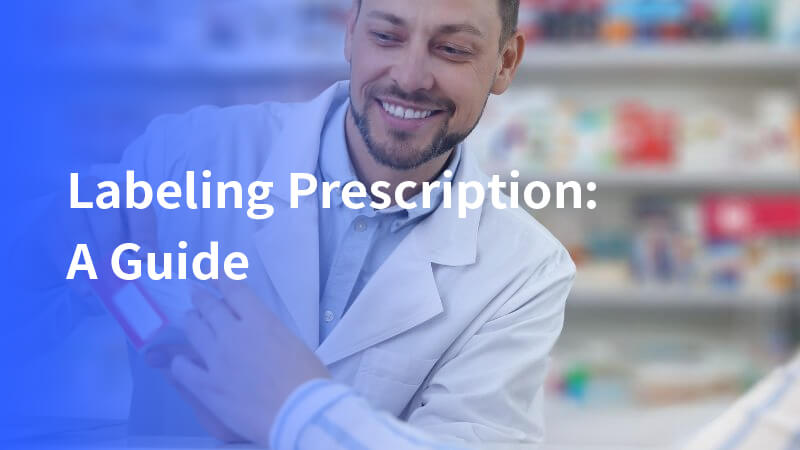Labeling prescription drugs can be found everywhere in many medical institutions and officially designated pharmacies.
Many pharmaceutical organizations or companies that have just entered the pharmaceutical industry may be unfamiliar with this type of labeling, and we are here to introduce it to you today from the following aspects:
What is a prescription drug and its potential drug interactions?
Unlike OTC drug, a prescription drug is a medication that requires a medical prescription from a licensed healthcare provider. These drugs are regulated as human prescription drugs to treat specific conditions, ensuring proper dosage and minimizing potential risks associated with improper use.
The labeling must include the year the drug was FDA initially approved to ensure prescribers have access to this important information. They are not available over the counter.

For these drugs, the content information on the label is not only for the consumer but is also an important document through the drug regulatory agencies.
What information is included on a prescription drug label, including clinically significant adverse reactions?
A prescription drug label provides essential details to ensure the safe and effective use of medication. The information typically includes:
- Drug name: Both generic and brand names.
- Dosage instructions: Exact dosage, frequency, route of administration, and dosage forms.
- Indications: The specific conditions the drug is intended to treat.
- Warnings: Potential side effects, contraindications, and precautions.
- Adverse reactions: Listing adverse reactions and common adverse reactions is crucial for ensuring patient safety. This helps healthcare professionals quickly identify potential risks associated with the medication, fostering safer prescribing practices and informed patient care.
- Storage instructions: Guidelines for storing the medication properly.
- Expiration date: The date beyond which the drug should not be used.
- Drug batch number: A unique number used to track the production and identifying characteristics of the drug.
- National drug code: The NDC number improves traceability and identification for healthcare professionals by detailing the medicine’s dosage forms, strengths, and quantities.
- Manufacturer information: Includes the name and address of the drug manufacturer.
- Medication instructions: Detailed instructions for use, including when to take the medication and how to use assistive devices (such as syringes).
- Drug ingredients: Lists active and inactive ingredients to help identify possible allergens.
- Emergency contact information: Phone numbers to contact the manufacturer or healthcare provider in case of an emergency.
- Refill information: Indicates whether the medication can be refilled and how many times it should be refilled.

Regulatory requirements for prescription drug labeling
Prescription drug labels must adhere to strict regulatory standards across different regions to ensure safety and consistency. Here are the key regulatory requirements:
- United States (FDA): Labels must include detailed information on dosage, side effects, and contraindications. They must also be clear, accurate, and approved by the Food and Drug Administration (FDA). Detailed drug labeling requirements, including information about administration dosage forms, are crucial to ensure patient safety by providing healthcare professionals with critical information on how to administer medication properly. Additionally, FDA approved patient labeling must accompany or be reprinted at the end of the prescription drug labeling to ensure patients have access to crucial safety and usage information. The FDA also requires substantial evidence demonstrating the effectiveness of a drug, ensuring that the benefits of the treatment outweigh the associated risks.
- United Kingdom (MHRA): The Medicines and Healthcare products Regulatory Agency (MHRA) mandates that labels clearly state the drug’s name, dosage, and storage instructions, along with a patient information leaflet.
- China (NMPA): The National Medical Products Administration (NMPA) requires labels to be in Chinese, with clear instructions, warnings, and the drug’s composition. Labels must comply with national standards for both content and format.
- European Union (EMA): The European Medicines Agency (EMA) requires that labels include information in the official languages of the member states where the drug is sold. Labels must provide comprehensive details on usage, risks, and storage, ensuring patient safety across the EU.
Design and printing of FDA approved patient labeling
Designing and printing prescription drug labels require precision and attention to detail to ensure readability and compliance. Key considerations include:
- Clarity and legibility: Fonts must be clear and of adequate size to ensure that all information is easily readable, even for those with visual impairments.
- Color usage: Color contrast is used to highlight critical information, with caution to avoid confusing or misleading elements.
- Material selection: Labels must be printed on durable materials that resist wear and tear, ensuring the information remains intact throughout the drug’s shelf life.
- Compliance with regulations: The design must adhere to regulatory guidelines specific to each region, including font size, language, and content layout.
- Medication errors: Poor prescription drug labeling can lead to medication errors, with over half of these errors linked to misunderstandings regarding labeling. Standardized, patient-centered labeling is essential to mitigate these errors and enhance patient self-management.
- Anti-counterfeiting features: Incorporating holograms, watermarks, or unique codes to prevent fraudulent reproduction of labels.
- Drug interactions: Understanding and managing drug interactions is crucial for patient safety. Labels should provide clear information on clinically significant interactions between medications, drug classes, or foods to help ensure proper prescribing and administration.
Viallabeller can provide first-class pharmaceutical labeling machines that can label ampoules, vials, bottles, boxes and other pharmaceutical containers for prescription drugs.

Conclusion
Labeling prescription drugs is a crucial aspect of ensuring patient safety and regulatory compliance within the pharmaceutical industry. Proper labeling provides essential information for both healthcare providers and patients, aiding in the correct administration and use of medications.
With strict regulatory requirements in different regions, from the FDA in the United States to the NMPA in China, it is imperative that pharmaceutical companies adhere to these standards to avoid legal repercussions and ensure consumer trust.
The design and printing of prescription drug labels must prioritize clarity, durability, and anti-counterfeiting measures to maintain the integrity of the information throughout the drug’s lifecycle. By understanding and implementing these elements, pharmaceutical companies can effectively meet the stringent demands of labeling prescription drugs.
Reference
Frequently Asked Questions about Labeling for Prescription Medicines







